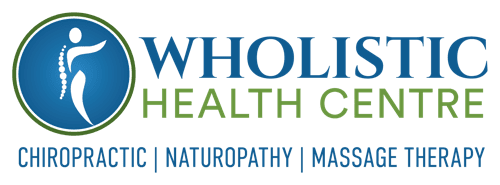The Incidence of TMD (temporomandibular joint disorder) is 50-75% of the general population has experienced unilateral TMD at least once and 33% reported at least one continuing persistent symptom.
There is currently no recognised or true gold standard for the detection or diagnosis of TMD. Rather, the term temporomandibular joint dysfunction refers to a range of clinical disorders that affect any of the components that make up the temporomandibular joint. Therefore a diagnosis should take into account:
- Extra-articular (occlusory)
- Intra-articular aspects of the TMJ where the condyle end of the mandible and its attached disc articulates with the glenoid fossa of the temporal bone
- Masticatory muscles systems
- Psychological overlays (central pain mechanisms)
A recent systematic review examined the diagnostic value of individual clinical tests for identifying the presence of TMD and for differentiating between the sub-classifications of TMD in terms of the peripheral components. The bottom line currently appears to be that all diagnostic tests have a large variability. As such, the data pool is not yet sufficient to accept or reject the commonly used clinical tests for the ability to reliability identify a specific cause.
It is important to draw a distinction between the peripheral and central mechanisms mentioned above. It is known that patients who report TMJ pain are also likely to have pain in several other locations and a study by Spilia (2011) examined this association. This highlights the likelihood that functional impairments in central nervous system function play a big role in TMD. Therefore, features such as the chronicity of jaw pain, other musculoskeletal pain sites, gender and evidence of a psychological dimension are all highly suggestive of a central mechanism.
A recent study in the journal PAIN (Weissman-Fogel 2011) identified abnormal cortical activity in patients with TMD related to cognitive and emotional tasks. So patients appear to demonstrate poorer performance in neuropsychological testing. Furthermore, a patient’s performance on cognitive testing was predictive of treatment outcome. This is in contrast to the clinical signs and symptoms of peripheral TMD, which could not distinguish between responders and non-responders to manual applications.
Sub classifications of TMD identified in the literature:
- Myofascial syndrome
- Synovitis
- Joint effusion
- Adhesions
- Internal derangement
- Osteoarthritis (early)
- Osteoarthritis (late)
- Disc displacement with reduction (DDR)
- Disc displacement without reduction (DDNR)
Connection with the Cervical Spine
The neck is intimately connected to the TMJ mechanism both mechanically and neurologically. So it is not surprising that there is a high association between TMD and signs and symptoms of cervical dysfunction.
Referred Pain from Cervical Structures
It is well appreciated that sensory inputs from craniofacial structures such as the TMJ, teeth and dura converge with sensory inputs from the cervical region at the trigeminal nucleus. Anatomically, the trigeminal nucleus extends down as far as the C3 level in the dorsal horn of the cervical spinal cord. Or, to say it differently, the trigeminal nucleus could be viewed as an upward extension of the cervical dorsal horn. This ensures one continuous sensory representation of the neck and head, which has considerable overlap.
Therefore, a pain source from any of the innervated structures in the cervical spine has the capacity to excite relay neurons in the trigeminal nucleus that also receive inputs from TMJ structures. As a result, a patient could perceive pain arising from the TMJ, muscles of mastication or teeth as a result of neck dysfunction. In addition to referred pain, is it possible that a joint lesion in the neck could actually cause mechanical insult to the TMJ.
Cervical Muscular Dysfunction
In additional to healthy joint alignment and function, an important indicator of chronic neck impairment is weakness of the cervical flexor muscles. One might therefore expect this to be present in patients with chronic TMD. A recent study in Manual Therapy demonstrated reduced endurance of the neck muscles in patients with TMD and neck dysfunction (Armijo-Olivo 2011). It is also worth noting that weak cervical flexor muscles are highly associated with Cervicogenic headache. We can therefore confidently reason an association between neck dysfunction, Cervicogenic headache and chronic TMD.
Management Considerations – Reasoning for a Chiropractic Treatment Approach
In the majority of cases, TMD is non-traumatic and there are no signs or symptoms of a sinister aetiology that requires referral. Based upon current understanding, the expectation is that mechanisms such as increasing proprioceptive sensibility of the TMJ will be effective in a large proportion of patients. This could be achieved with targeted joint forces, such as adjustments, and addressing myofascial irritation. The success rate should be increased by addressing any cervical dysfunction, as well as improving overall spinal alignment and stability. Taking a global approach with patients is important in the context of reducing the tendency for abnormal changes in central neurology that would predispose to TMD.
Pathoanatomical Diagnosis versus a Movement Diagnosis with TMD
Whilst our clinical reasoning should always aim to identify a pathoanatomical lesion, clinicians are inherently aware that treatment selection is not based solely on what structures are abnormal. Rather, the focus is on function. The major question then, is “What type and degree of functional impairment does the patient exhibit and how can that be reduced?”
When a patient presents with symptoms of temporomandibular joint dysfunction at JR Chiropractic, we:
- Consider overall contributing factors and likelihood of central mechanisms
- Consider cervical spine-related mechanisms
- Consider peripheral mechanisms of TMD
Education regarding the nature of pain and healthy lifestyle habits will also help achieve a successful outcome.



